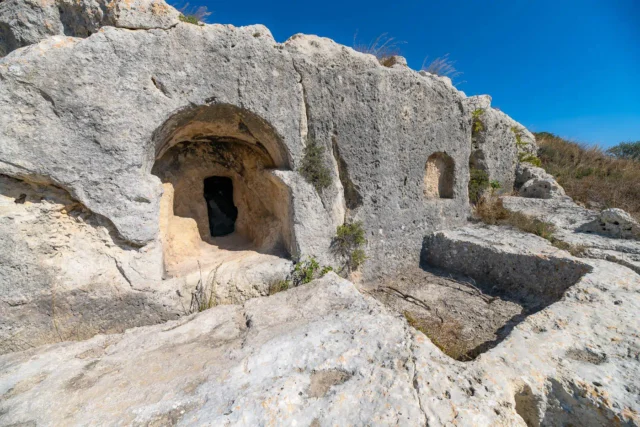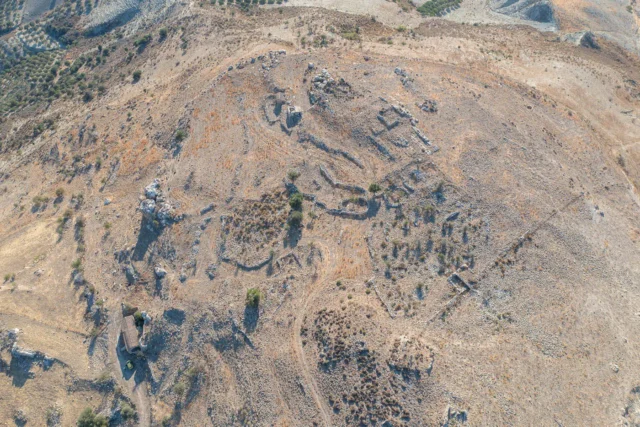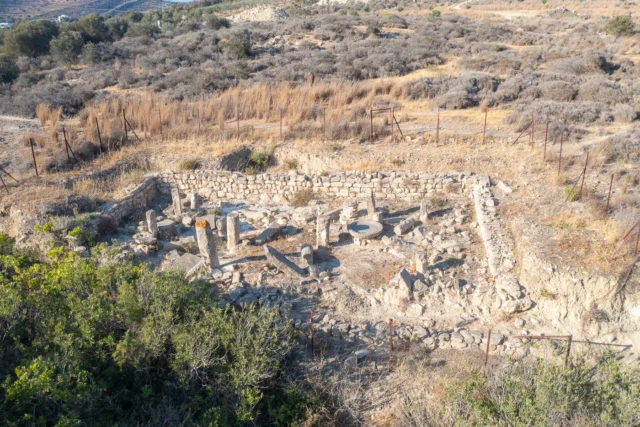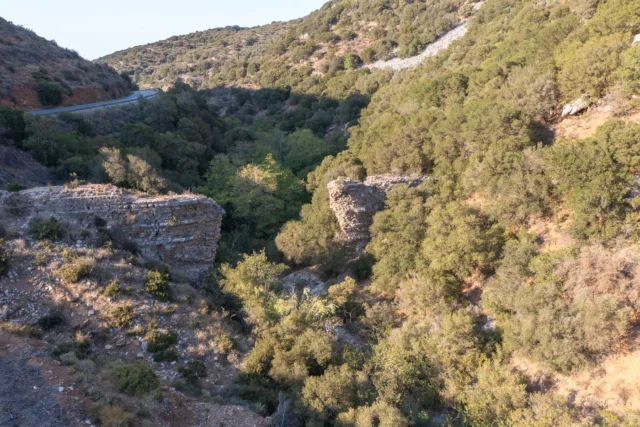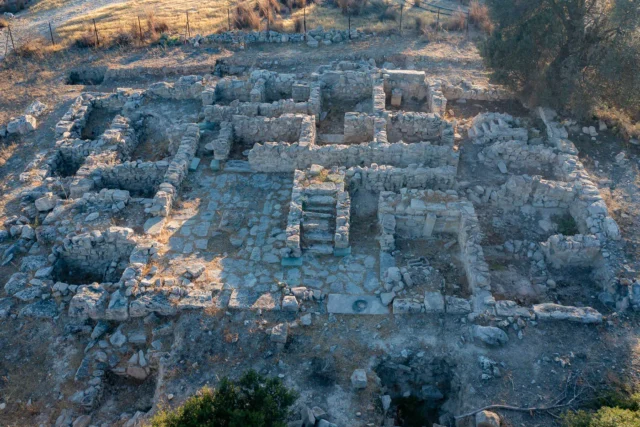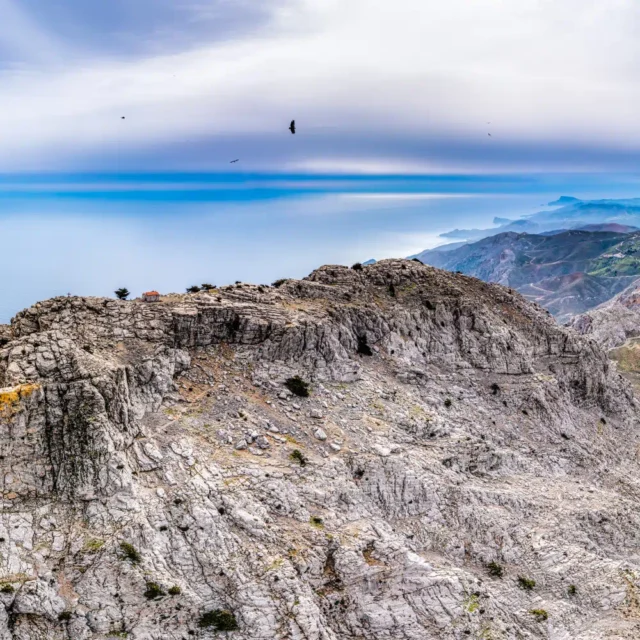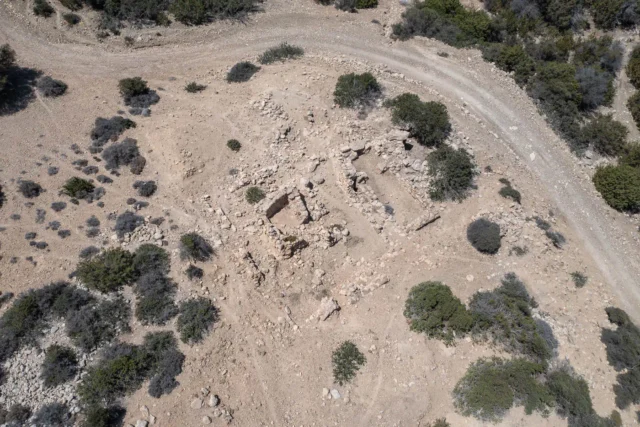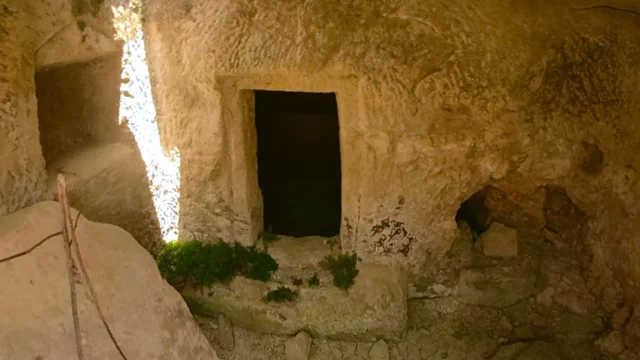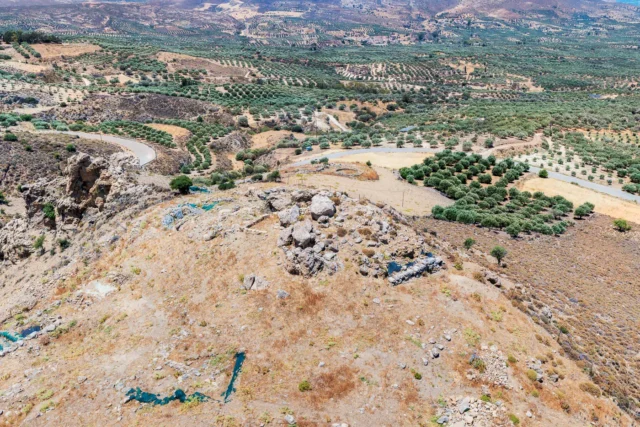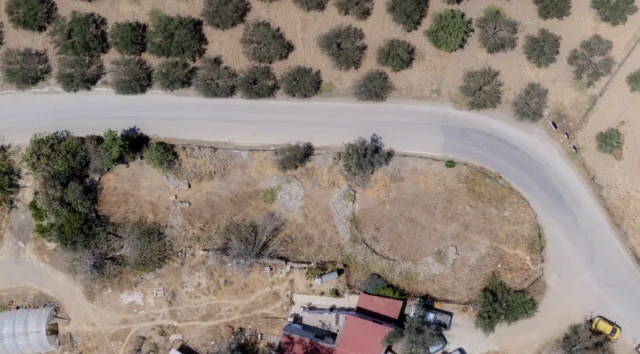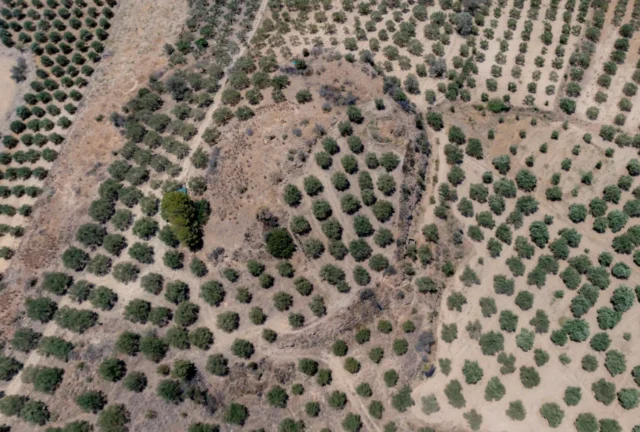107
listings found
Categories
Active filters:
Vakiotes Acropolis
The Vakiotes Acropolis, located east of Sokaras village near Velouli and Apoini in Crete, is an archaeological site with dwellings and tombs carved into the rock. This unique construction, along with finds like wine presses and a Roman-era tomb, suggests a long period of occupation from the Geometric period to the Turkish era. The site's name and evidence of wine production may link it to the god Bacchus. Archaeological investigations have uncovered a tomb with silver denarii from the reigns of Roman emperors Vespasian, Trajan, and Domitian. The surrounding landscape also features remnants of a church and an old windmill. Declared a protected archaeological site in 2001, Vakiotes Acropolis offers a glimpse into ancient construction techniques and daily life.
Ancient Oleros
Oleros was an ancient Cretan city inhabited from the Early Iron Age until the Roman period. It was known for its olive oil production and political involvement in Crete.
Lasaia: An Ancient Cretan Town and Port
Lasaia, an ancient coastal town in Crete, was a vital port with a rich history spanning from the Minoan to Roman periods. Its well-preserved harbor complex played a crucial role in maritime trade and cultural exchange.
Ancient Lato
Lato, an ancient city in Crete, reached its peak after the Dorian arrival. Named after the goddess Leto, Lato was strategically located on a hilltop overlooking the Mirabello Gulf. The city was heavily fortified, with strong walls, gates, and towers. Lato was one of the most powerful city-states in ancient Crete, with a well-organized political structure and a thriving economy. The city's port, Lato pros Kamara, facilitated trade and contributed to its growth. The archaeological site of Lato features well-preserved remains, including the agora, prytaneion, theater, temples, and private houses. Lato was eventually abandoned in the Roman era but was rediscovered in the late 19th and early 20th centuries. Today, it is a popular tourist destination, offering visitors a glimpse into the life of an ancient Cretan city. Lato was the birthplace of Nearchus, a famous admiral who served under Alexander the Great.
Ancient Priansos
Priansos was a significant autonomous ancient city located on a flat mountaintop near modern-day Kasteliana in the Monofatsi province of Crete, offering commanding views. Existing from the Archaic period, it reached prominence during the Hellenistic era, evidenced by coins featuring Hygeia and Poseidon, indicating a focus on health and maritime trade. Inscriptions show political ties with Gortyn and Ierapytna, and its oath invoked deities like Hestia and Apollo. Priansos allied with Eumenes II of Pergamon in 170 BCE. In the early 13th century CE, Venetians built the Belvedere castle on the same site, likely reusing materials from the ancient ruins. Today, archaeological remains, including structures and tombs, are visible at the partially excavated site.
Minoan villa at Kalamaki
Minoan villa at Kalamaki, Crete, near the Sfakoryako stream. Archaeological findings from the 1978 & 1979 surveys suggest a thriving Minoan settlement in the region.
The Aqueduct of Chersonesos
Discover the ancient aqueduct of Chersonesos in Crete, a marvel of Roman engineering that supplied water to the city for centuries. Learn about its construction, significance, and connection to the broader Roman presence on the island.
Pitsidia Minoan villa
Minoan villa ruins near Pitsidia, Crete, dating back to 1700-1450 BC. Insights into Minoan daily life, architecture, and earthquake response.
Kofinas peak
Kofinas peak sanctuary in Crete offers insights into Minoan religious practices, societal structures, and the relationship between humans and the natural world.
Skaniari Lakkos
Skaniari Lakkos, a Minoan cemetery complex located in the Asterousia Mountains of southern Crete, provides valuable insights into Minoan burial practices and social organization during the Bronze Age. It features five distinct burial structures, including two tholos tombs and three rectangular buildings, each containing multiple chambers and showcasing a variety of architectural styles. These structures date back to the Final Neolithic period (c. 3500 BC) to the Middle Minoan IB period (c. 1900 BC). Excavations at Skaniari Lakkos have yielded a wealth of artifacts, including pottery vessels, stone tools, jewelry, and seals, providing information about Minoan material culture, artistic expression, and trade networks. The presence of imported goods suggests connections with other regions in the Aegean and beyond. The site's remote location and the monumental nature of the burial structures underscore the importance of death and the afterlife in Minoan society. Skaniari Lakkos is part of a broader network of Minoan settlements and burial sites in the Asterousia region, including Trypiti, Doukiania, and the tholos tombs of Kefali and Moni Odigitria.
Margarites tholos tomb
Late Minoan Tholos Tomb at Margarites, Mylopotamos During the winter of 1996-1997, a significant Late Minoan III period tholos tomb was excavated on the property of M. Papadakis, in the […]
Galatas Minoan Palace
Located on Galatas Kephala in central Crete's Pediada region, this significant Minoan urban site features a large palace complex. Occupied from Early Minoan I to Late Minoan III, the palace was built in Middle Minoan IIIA and rebuilt in MM IIIB, the settlement's peak. It functioned as an administrative, economic, and ideological center. Excavations revealed planned architecture with a four-wing palace, central court, ashlar masonry from Alagni, gypsum details, elite houses, and frescoes linked to Knossian styles. Finds include storage jars, evidence of feasting, a shrine model, and workshops for stone vessels and LM IB weaving. Strong ties to Knossos are clear. The town was abandoned in LM III after destruction events.
Hellenistic Town of Ampelos in Xerokampos
An ancient Hellenistic city (4th-1st centuries BC) on Crete's southeastern coast at Xerokampos. Its urban plan focused on maritime trade, unlike typical inland cities. Its most unique feature is its dual urban centers: Pharmakokephalo, a fortified coastal hub (approx. 12,000 sq meters) with walls and towers for trade, and Kastri, an inland acropolis 1km away for civic and administrative functions. These two centers were interconnected and complementary, reflecting a complex social and economic organization. The site offers insights into Hellenistic settlement patterns and interactions with other centers like Itanos and Hierapytna.
Kamilari Roman graveyard
The Roman Tombs of Kamilari, located in southern Crete, are an archaeological site that offers a glimpse into the island's history during the Roman period. Discovered in 2010, the tombs are situated at the foot of Evgora Hill, close to Metochi Kamiliariou. The area was known locally as "Xospilios," possibly derived from the Greek word for cave ("spilaio"). The tombs are estimated to have been constructed around 50 AD, based on discovered coins, and provide valuable insights into Roman burial practices. The site is under the supervision of the Archaeological Service.
The Minoan Settlement and Cemetery at Koumasa
Koumasa, an important Minoan archaeological site in southern Crete, is located about 15 km south of Gortyn. The site is significant for its Prepalatial cemetery and Minoan settlement, providing insights into the lives and customs of the Minoans during the Prepalatial period.
The Cemetery at Koumasa consists of three circular tholos tombs, a square tomb, and a circular ossuary. Excavations uncovered artifacts, including a clay figurine depicting a bull-leaping scene, Cycladic figurines, stone offering tables, and gold jewelry.
The Minoan settlement at Koumasa is located on a hill overlooking the cemetery. Excavations have revealed an extensive settlement with evidence of domestic and industrial activities. The presence of large walls suggests the existence of substantial buildings.
Platanos Minoan tholos tombs
The Minoan tholos tombs at Platanos, located in the Messara Plain of Crete, are significant archaeological remains from the Prepalatial period (c. 3200-2000 BC). Excavated in the early 20th century, the site features three tholos tombs (circular, beehive-shaped burial chambers) and a paved courtyard. The tombs, labeled A, B, and C, vary in size and preservation. Tomb A, the largest, has an internal diameter of 13 meters. The tombs contained many artifacts, including seals, figurines, pottery vessels, stone vessels, gold jewelry, and bronze tools. These findings provide valuable insights into Minoan funerary practices and material culture during the Prepalatial period. The presence of imported objects, such as an ancient Babylonian cylinder seal and Egyptian scarabs, also highlights the extensive trade networks that connected Crete with other civilizations in the Eastern Mediterranean.
Kaloi Limenes Minoan tholos tomb
This tomb, a circular burial structure characteristic of the Minoan civilization, offers valuable insights into the burial practices, social structures, and cultural beliefs of the Bronze Age inhabitants of this […]
Minoan Tholos Tomb at Porti
The Minoan Tholos Tomb at Porti, a significant archaeological site in Crete, offers a glimpse into Minoan burial practices and cultural traditions during the Bronze Age.










